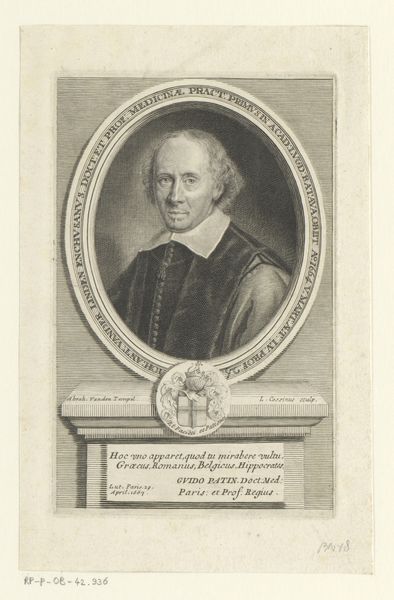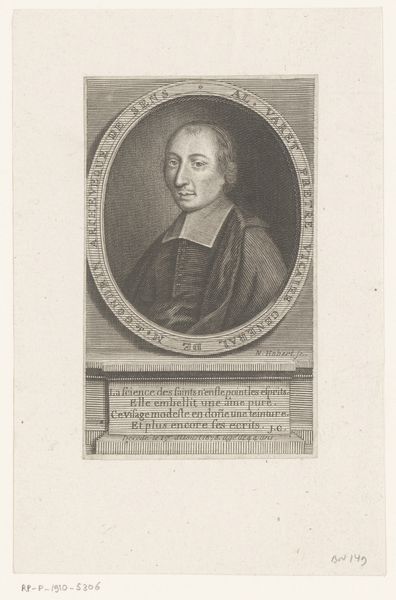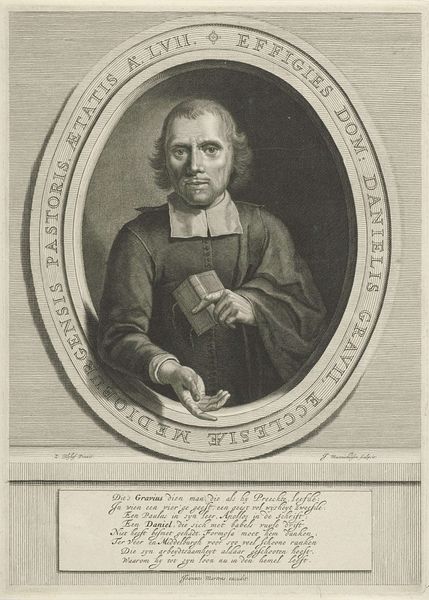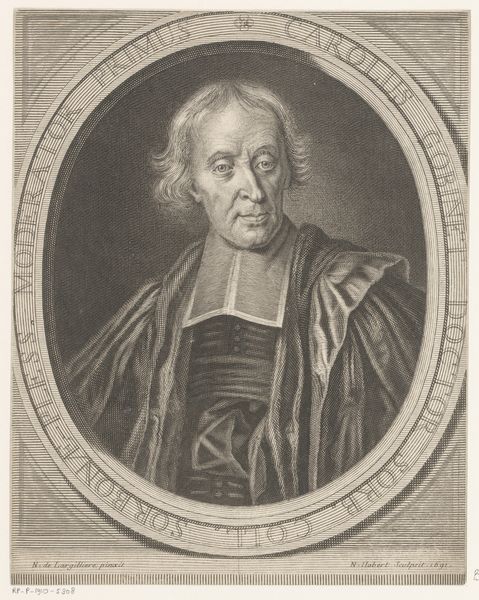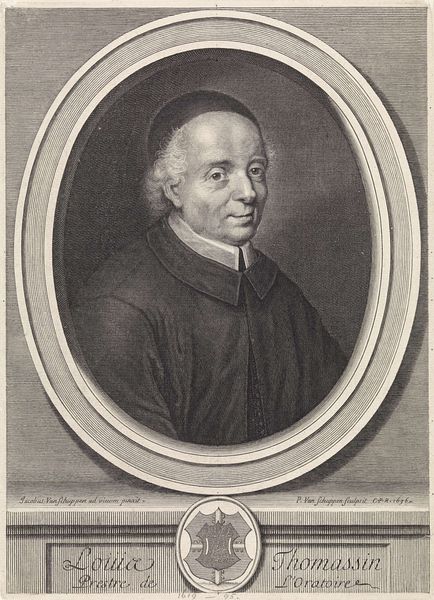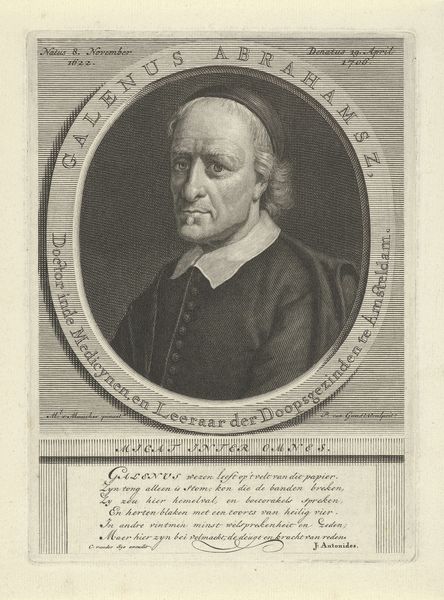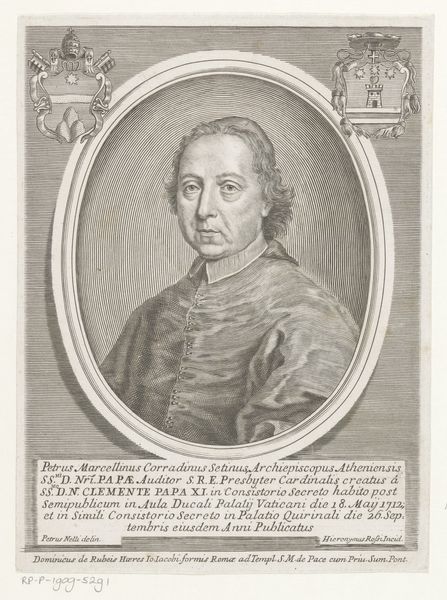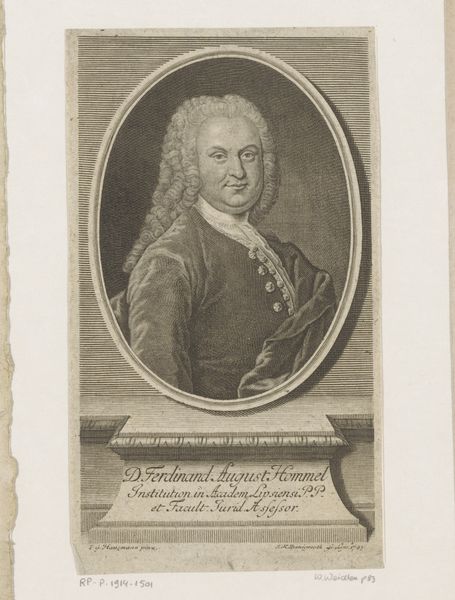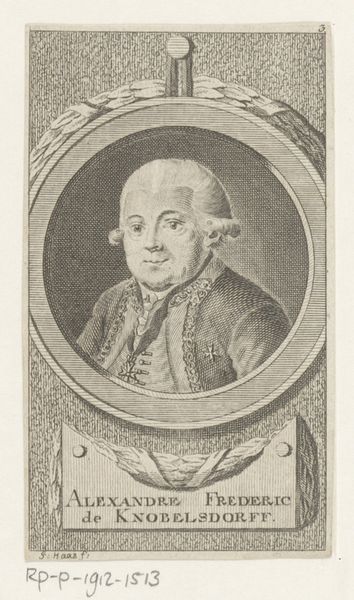
print, etching, engraving
#
portrait
#
baroque
# print
#
etching
#
old engraving style
#
historical photography
#
line
#
history-painting
#
engraving
Dimensions: height 213 mm, width 159 mm
Copyright: Rijks Museum: Open Domain
Curator: Here we have "Portret van Adrien Baillet," an engraving likely made between 1709 and 1726. It depicts a figure who was, according to the inscription, born in 1649 and died in 1706. Editor: The fine lines give it a stark and dignified quality. The contrast is striking. You can almost feel the weight of those baroque garments despite them being just a pattern of lines. Curator: This portrait comes to us during a period of great change in European intellectual life, Baillet, himself, was a learned biographer and critic. These printed portraits were tools for circulating images of important intellectuals. Editor: Absolutely. Note how the face is handled. The eyes especially. Light catches them, giving him an intelligent and keen expression, quite typical of baroque portraiture aiming for realism and immediacy. The oval frame, almost a stage, contains and directs our attention to him. Curator: These images played a role in shaping public perception, influencing opinion, constructing legacy. The choice of engraving, allows for reproduction, widening the distribution and increasing access to his image. Think about how such engravings allowed individuals outside the immediate circle to have a tangible connection. Editor: Precisely, and that oval frame… the stylized leaves… it’s almost excessive but in a very deliberate way. All the energy leads back to his face. Notice too, the inscription is almost an afterthought at the bottom. An elaborate frame contains it but, textually, its separate from the man himself. Curator: The text describes finding refuge from falsehood in criticism – so relevant during periods when access to the written word was being transformed by printing, but so, too, constrained by religious and secular censorship. These portraits allowed figures to project intellectual authority in a society wrestling with new information and modes of thought. Editor: This offers more than a likeness, the lines somehow capturing his very essence! A delicate, compelling image, testament to both Baillet and the skilled printmaker, even if it's 'just' black lines on paper. Curator: Indeed, it really encapsulates how art can serve as a powerful bridge between individuals, ideas, and societal change.
Comments
No comments
Be the first to comment and join the conversation on the ultimate creative platform.
